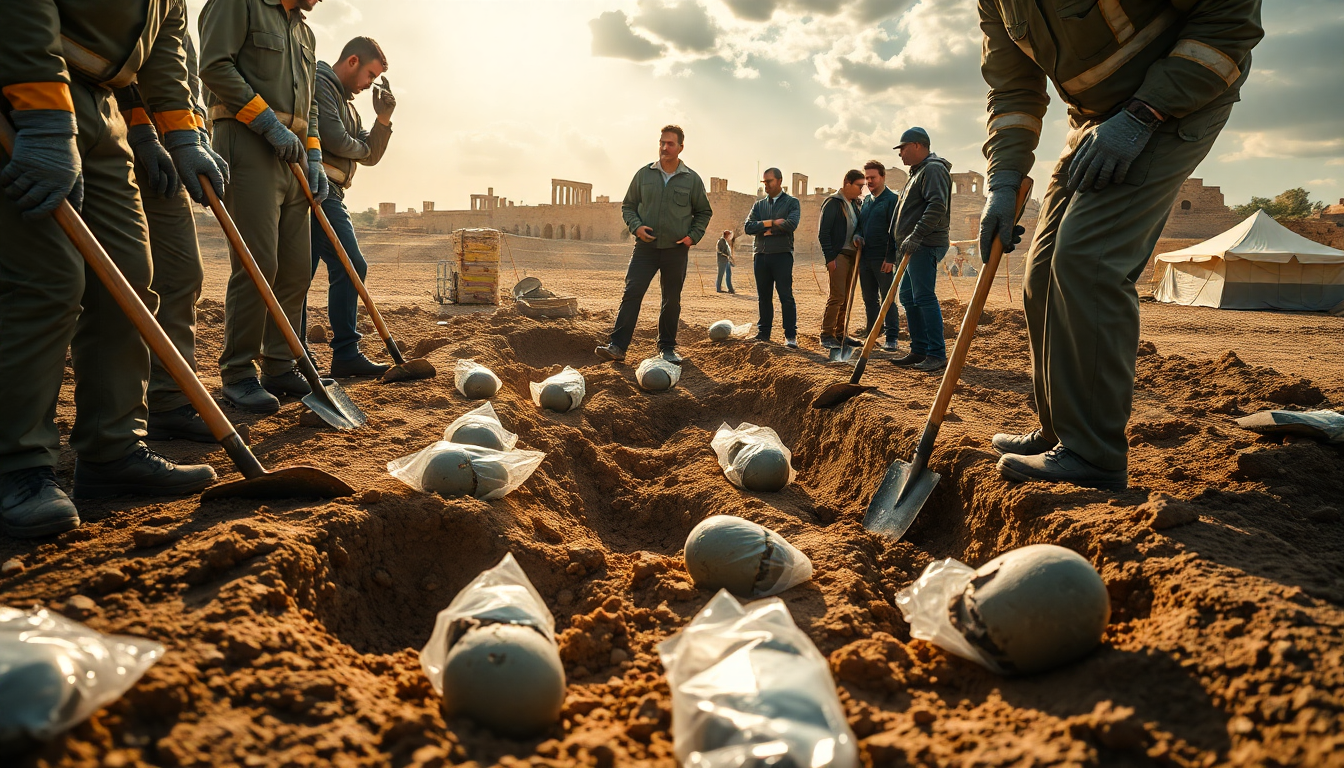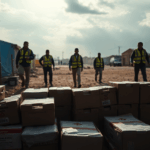Table of Contents
The excavation of what is believed to be one of the largest mass graves in modern Iraqi history is currently taking place at the al-Khasfa site, located just south of Mosul. This operation reveals the horrific acts committed by ISIL during its reign of terror from 2014 until its defeat in 2017.
With estimates suggesting that at least 4,000 human remains may be found here, this excavation is not just a grim task; it’s a painful reminder of the atrocities inflicted on civilians during one of Iraq’s darkest periods. How can we truly understand the scale of such violence?
Context of the Excavation
Local authorities, alongside the judiciary, forensic teams, and organizations dedicated to preserving the memory of victims, have embarked on this vital excavation. The al-Khasfa site features a massive sinkhole, around 150 meters deep and 110 meters wide, believed to be the scene of numerous massacres carried out by ISIL.
Ahmad Qusay al-Asady, who leads the Martyrs Foundation’s mass graves excavation department, confirmed that the work began on August 9, following a request from the Nineveh province. Isn’t it striking that efforts to uncover the truth about these lost lives are finally underway?
In the early stages of this operation, teams are concentrating on collecting visible human remains and surface evidence.
Al-Asady pointed out that a complete exhumation will likely require international assistance due to the challenging conditions at the site, which include hazardous elements like sulfuric water and unexploded ordnance. These factors not only complicate the excavation process but also endanger the integrity of the remains, making DNA identification efforts more difficult.
What does this say about the ongoing battle for justice?
Historical Significance of Al-Khasfa
The chilling history of al-Khasfa is closely linked to the wider story of ISIL’s brutal campaign in Iraq, as the group aimed to establish a self-declared caliphate across vast territories.
At its peak, ISIL controlled an area roughly half the size of the United Kingdom, with Raqqa serving as its de facto capital. The group gained infamy for its extreme violence, particularly against minority groups like the Yazidis, who endured horrific atrocities, including mass killings and enslavement. How does one even begin to process such brutality?
Rabah Nouri Attiyah, a lawyer with extensive experience in missing persons cases in Nineveh, believes that al-Khasfa could represent Iraq’s largest mass grave in recent history. However, al-Asady has cautioned that investigators have yet to definitively confirm the site’s size or the total number of remains. Eyewitness accounts suggest that ISIL fighters systematically transported victims to this site, where many were executed in shocking ways. What does this mean for the families still searching for their loved ones?
Challenges Ahead and the Path to Justice
Recovering remains from al-Khasfa is just one piece of Iraq’s ongoing struggle to confront the legacies of violence left by both ISIL and the former regime of Saddam Hussein. As investigators work to uncover the truth, they aim to create a comprehensive database of victims and collect DNA samples from families of the presumed deceased. This crucial step is vital for providing closure to families still yearning for answers about their loved ones. How can we ensure that their stories are not forgotten?
Nonetheless, the path forward is laden with challenges. The presence of hazardous materials and the potential for further discoveries complicate the exhumation process. Authorities are determined to proceed with caution, ensuring that the dignity of the victims is upheld while also gathering essential evidence that may aid in future prosecutions and historical documentation of ISIL’s crimes. What can we learn from these efforts to ensure that such atrocities are never repeated?





